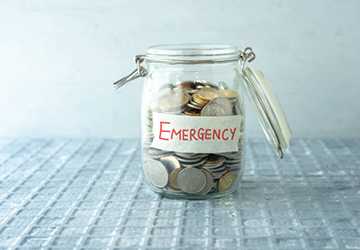Have you ever opened your wallet one day and realized you only have a fiver inside? Maybe the car broke down, or the electricity bill exceeded usual. These surprise bills can leave us panicking and lead to hasty decisions that trap us in debt.
What if a small $200 cash cushion could save you from money headaches down the road? It may seem not very easy to save when funds are already tight. But protecting yourself from further financial harm is vital.
Building a primary $200 emergency fund is possible with determination and intelligent budgeting. This starter savings acts like an airbag - cushioning life's curveballs so they don't throw your finances into turmoil.
In this post, we'll share four practical saving and spending tips so you can build a $200 safety net. Consider it an insurance policy for urgent issues needing money fast. The planning requires some work but pays off hugely in peace of mind.
Let's get started!

Why Do You Need a $200 Emergency Fund?
Life has a way of throwing curveballs when you least expect it. Without a financial buffer for surprises, you may resort to quick fixes like payday loans or paying late fees on bills. This starts a dangerous cycle of debt that isn't easy to break.
Having $200 set aside means you will catch up when little emergencies pop up. Your emergency fund keeps you financially afloat, whether it's an unexpected medical bill, car breakdown, or temporary job loss. It also saves you from accruing interest charges on unpaid bills or credit cards.
The peace of mind alone makes saving $200 worthwhile. You'll worry less about money knowing you have a small cushion. It's there in case you need it.
1.Track Your Spending to Free Up Money
The first step is getting clarity on where your money goes each month. Use a spreadsheet, budgeting app, or written log to track all expenses for 1-2 months.
This includes essentials like housing, food, transportation, discretionary spending on dining out, entertainment, hobbies, etc.
Tracking spending reveals wasteful habits you can cut back on, like grabbing takeout coffee every day. Even minor lifestyle adjustments free up money that can be channelled into savings over time.
The key is consistency. Stick to your spending plan and squirrel away the savings.
2.Build Your Income to Accelerate Savings
In addition to cutting expenses, consider ways to increase income. Are there idle assets to sell or rent, like a spare room, driveway, or equipment? Does your employer offer overtime hours or temporary gigs?
The goal is to bring an extra $50-100 monthly into your fledgling emergency fund.
Small, consistent amounts add up over time. Earning more gives your budget breathing room so you don't feel deprived by spending adjustments.
3.Open a Separate High-Yield Savings Account
Keep your emergency money in an easily accessible, high-yield savings account. The interest you earn will help it grow faster.
Just be sure it's separate from everyday spending accounts, so the $200 remains untouched except for real emergencies.
Set up automatic monthly transfers from checking to the savings account. Even $25 consistently saved builds your cushion quicker than manual contributions.
Out-of-sight, out-of-mind account separation helps reinforce saving as an ongoing habit.

4.Hit Pause on Long-Term Saving Goals
Finally, pause non-essential savings like travel, gifts, or new tech gadgets. Keep focusing energy on the emergency fund milestone before shifting priorities.
Get in the habit of asking, "Is this more important than having cash reserves for an emergency?"
Think of the $200 as an insurance policy against potential disaster. Once built, please resist the temptation to tap it for minor conveniences.
Save and replenish so it's always ready when urgent needs pop up.
Start Building a $200 Emergency Fund Now.
Ever heard the saying, "Hope for the best, prepare for the worst"? An emergency account alignment with prudent, forward-thinking personal finance habits. It cushions life's unexpected curveballs so they don't knock your budget off track.
With spending awareness and consistent contribution, saving $200 is very doable. Even small amounts add up over time into a nice little safety net.
Why not start building your financial buffers today? Your future self will thank you!





